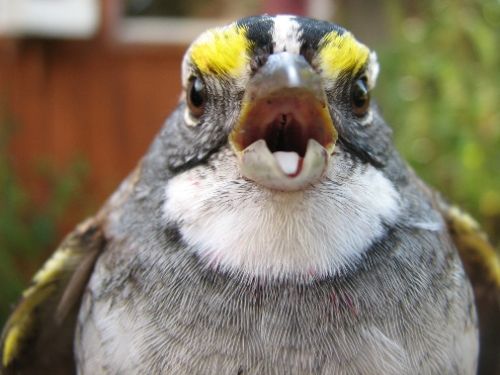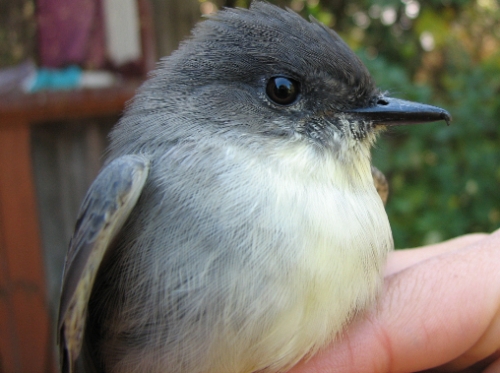|
McGILL BIRD OBSERVATORY |
||||||||||||||||||||||||||||||||||||||||||||||||||||||||||||||||||||
Welcome
to the McGill Bird Observatory weekly report.
Click here for a complete listing of our archives.
Banders-in-charge: Barbara Frei, Marie-Anne Hudson, James Junda Notes: Our prediction that some of our ‘key players’ would be turning up this week has proven to be true. Along with the second half of September and the second half of the fall migration season, the birds have arrived en masse! With almost double the number of birds banded this week compared to last, yet the same number of species, we see a new pattern emerging. We are seeing a lower diversity of birds, now that most of the warblers and flycatchers are on their way out, but a higher volume as our top species, the Yellow-rumped Warblers, White-throated Sparrows and Ruby-crowned Kinglets migrate past us in large numbers. Our total for the season remains over 50% higher than in 2007, both in terms of total number of birds banded, and number banded per net hour. Highlights this week included two species banded for the first time this fall – Yellow Palm Warbler (which is actually one of 2 subspecies of the Palm Warbler we see during migration) and Eastern White-crowned Sparrow, and two species newly observed for the season – Cackling Goose and Greater Yellowlegs. Diversity of species seen on the site has dropped, yet an average of 40+ species are still being seen or banded at MBO on a daily basis. In contrast, the number of birds banded each day has increased to between 50 – 70 individuals. Yellow-rumped Warblers jumped easily into the number one spot of the top ten species banded this week, with 167 birds banded – the first species this year to top 150 individuals in a single week. White-throated Sparrows remain in the number 2 spot, despite having more than doubled their numbers between week 7 and 8. Meanwhile, Ruby-crowned Kinglets have tripled their numbers from a week ago, and vaulted into third place. Magnolia Warblers have at last dropped significantly, while Nashville and Tennessee Warblers have maintained similar numbers and positions, as has Song Sparrow. The Golden-crowned Kinglet is a new addition near the bottom of this week's list, but may well move up in prominence over the weeks to come, as their numbers typically peak in early to mid-October.
For the top species observed on site this week, Canada Geese are the clear winners, as their familiar calls and V-formations often darken the skies in the early morning hours. Volunteers old and new are now well versed to dash to the nearest clearing and turn their eyes to the sky with the first honk heard in order to be the first to correctly count the flocks overhead. The birds of early fall, such as the Cedar Waxwings, are slowly disappearing and we see more of the later fall species on site, such as the Black-capped Chickadees, Red-winged Blackbirds, and White-throated Sparrows. Also of note, American Robin has crept into the bottom of the list this week, and likely represents the advance guard of the hundreds of individuals we often see daily over the final three weeks of the fall season. Just the ten most abundant species alone accounted for an average of more than 800 birds per day observed at MBO this week.
|


